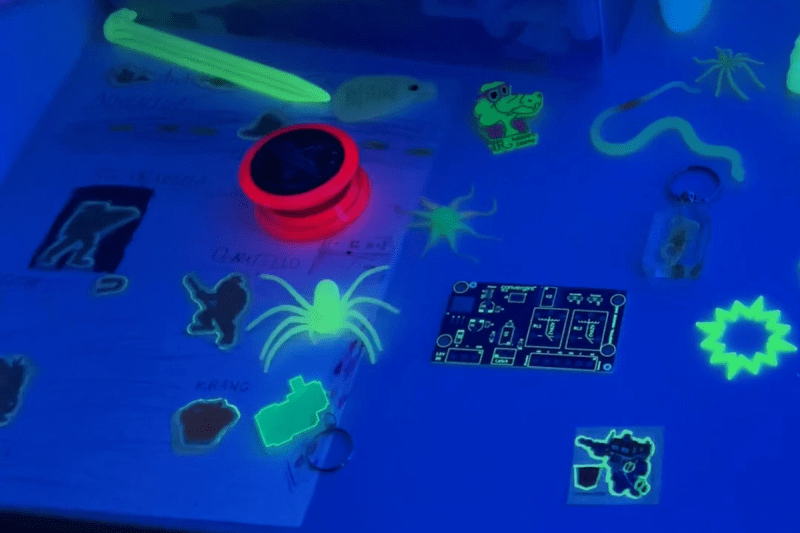What if circuit boards could glow in the dark? It’s a fun question, and one [Botmatrix] sought to answer when approached by manufacturer PCBWay to run a project together. It turns out that it’s quite possible to make glowing PCBs, with attractive results. (Video after the break.)
Specifically, PCBWay has developed a workable glow-in-the-dark silkscreen material that can be applied to printed circuit boards. As a commercial board house, PCBWay hasn’t rushed to explain how precisely they pulled off this feat, but we don’t imagine that it involved anything more than adding some glow-in-the-dark powder to their usual silkscreen ink, but we can only speculate.
On [Botmatrix]’s end, his video steps through some neat testing of the performance of the boards. They’re tested using sensors to determine how well they glow over time.
It might seem like a visual gimmick, and to an extent, it’s just a bit of fun. But still, [Botmatrix] notes that it could have some practical applications too. For example, glow-in-the-dark silkscreen could be used to highlight specific test points on a board or similar, which could be instantly revealed with the use of a UV flashlight. It’s an edge case, but a compelling one. It’s also likely to be very fun for creating visually reactive conference badges or in other applications where the PCB plays a major cosmetic role.
[Botmatrix] says these are potentially the first commercially-available glow-in-the-dark printed PCBs. We love glow in the dark stuff; we’ve even explored how to make your own glowing material before, too. .
















It’s worth noting that conformal coating typically also includes fluorescent dyes. Then you can add waterproofing/dust protection and glow-in-the-dark at once.
^ I’ve used those coatings a lot and the UV fluorescence is very handy for inspecting an otherwise clear coating has been applied correctly.
Okay, I want to make my Eurorack module panels with this stuff.
100% the first thought I had too lol
It’s really kind of cool even if I’m not sure of the utility of this circuit boards but I’d definitely consider using it for PCB front panels
Could it be used with in-board mounted UV LEDs to create some kind of display?
Could be useful on dev boards when they’re often buried a bit in some enclosure and not so easy to get light onto them to read the markings. A reactive marking would glow clearly even at the bottom of a case.
It would necessarily be an ultra-low refresh rate display (glow in the dark paint phosphors have a relaxation time measured in minutes at room temperature, compared to milliseconds on a CRT). So if the display you have in mind is just “always on” or “always off”, that could be a really slick way to display it.
A better idea, temperature based color changing silkscreen/full coating, to debug PCB
We we about to enter the era of RGBAU lighing on gaming PCs where the U ultraviolet LEDS are turned on to make the glow in the dark paint shine.
Oh, I did a handmade one years ago with aliexpress glow in dark nailpolish.
It was super crude (I don’t even know if I kept it), but it was funny.
Glad to see a profesionnal service providing this options now!
Well, the boards are already UV reactive. The resin in FR4 boards contain fluorescent materials, so that UV light can be used in AOI machines to create better contrast for finding fiducials. I use a UV torch all the time to check the datecode in boards that we make. Since the mfg markings are mostly in solder mask, the text really pops with UV light.
It also highlights the layers nicely when doing cross section analysis from samples.